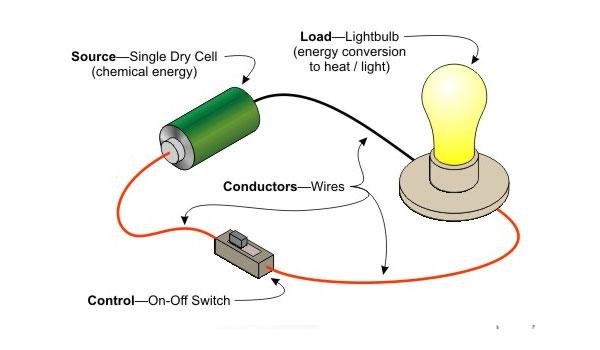Electric Charge
Electric charge is a property which determines the electromagnetic interaction of subatomic particles, denoted by (q), measured in coulombs (C).
Subatomic Particles
Subatomic particles are particles much smaller than atoms. There are two types of subatomic particles :
- Elementary particles
- Composite particles
Electron is elementary particle. Protons and neutrons are made up of smaller fundamental particles called quarks. A quark is a type of elementary particle. There are 6 different types of quarks: up, down, charm, strange, top, and bottom. A neutron is made up of one up quark (charge = +2/3) and two down quarks(charge = -1/3). A proton consists of three quarks, two up quarks (charge = +2/3) and one down quark(charge = -1/3).
Orientation of Subatomic Particles
Protons and neutrons are heavier than electrons and reside in the nucleus at the center of the atom. Electrons are extremely lightweight and exist in a cloud orbiting the nucleus.
Interaction of Subatomic Particles
| Neutron | Neutron | Nothing |
| Neutron | Electron | Nothing |
| Neutron | Protron | Nothing |
| Proton | Proton | Repulsion |
| Electron | Electron | Repulsion |
| Proton | Electron | Attraction |
Classification of Charge
Benjamin Franklin was the first American scientist who proved that there are two types of electric charges :
- Positive charge
- Negative charge
Electron is negative charge and proton is positive charge that means charge of electron is opposite to that of proton(Qproton=−Qelectron). If we re-designate all positive electric charges as negative and vice versa the resulting physics would be the same. It is nothing but a matter of convention.
Unit of Charge
The SI unit of charge is coulomb and its symbol is C. where 1C is equal to approximately 6.24×1018 elementary charges (charge of a electron). Robert Milleken in 1913 determined the charge of an electron by his classical oil-drop experiment and found the value to be 1.602×10-19C. The charges are equal on both proton and electron but opposite.


Thanks @muphy for supporting us.